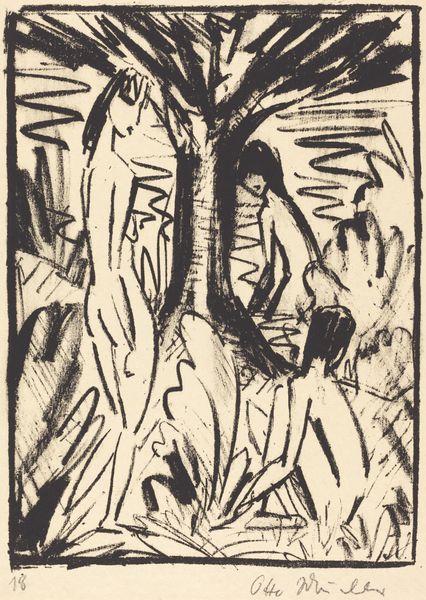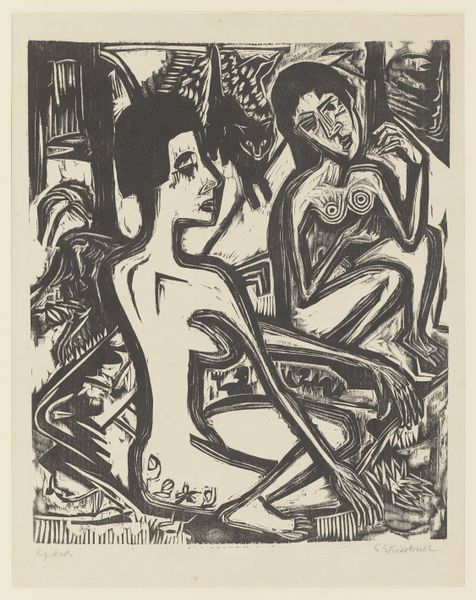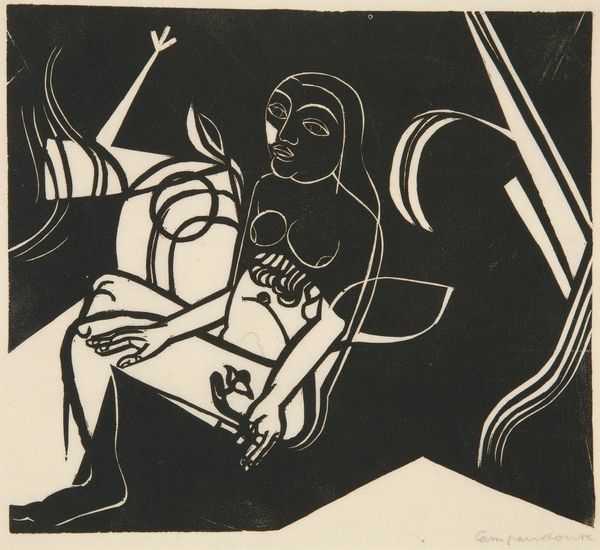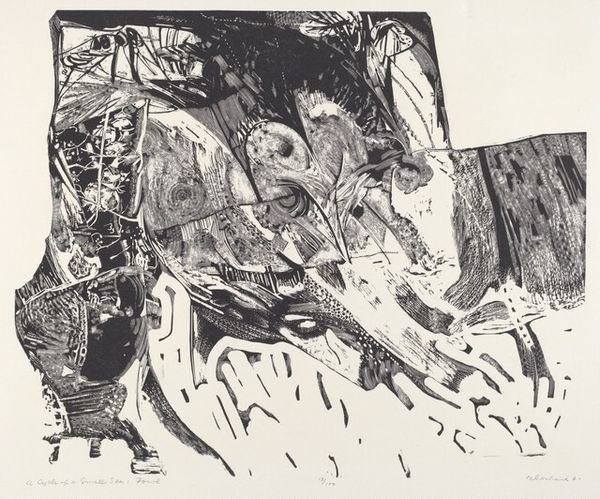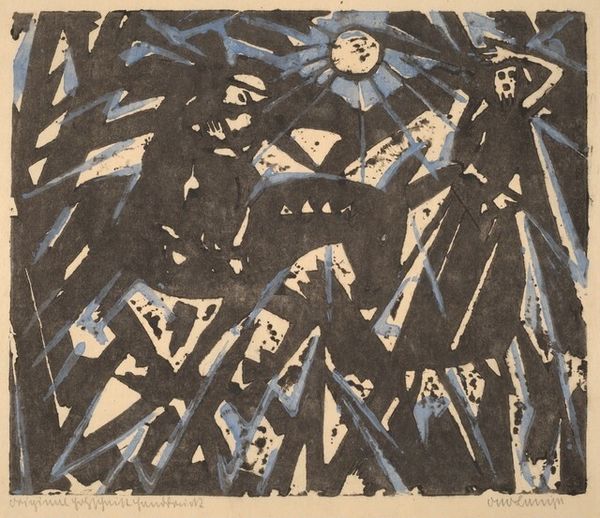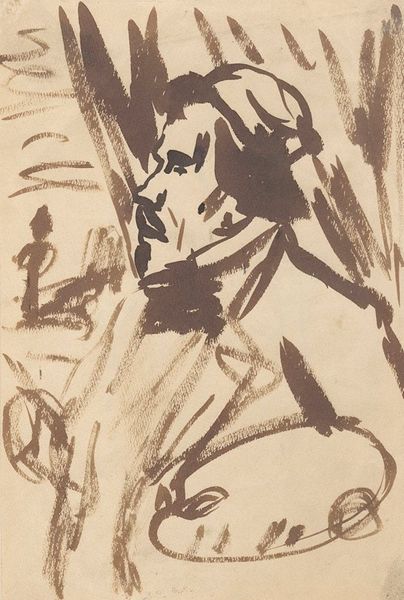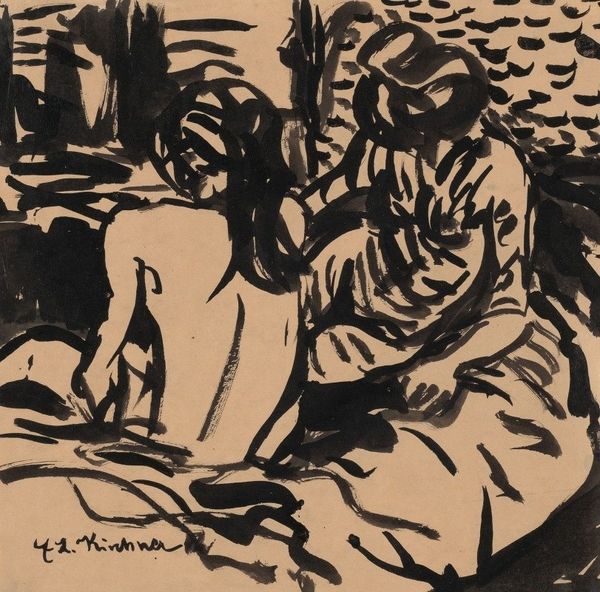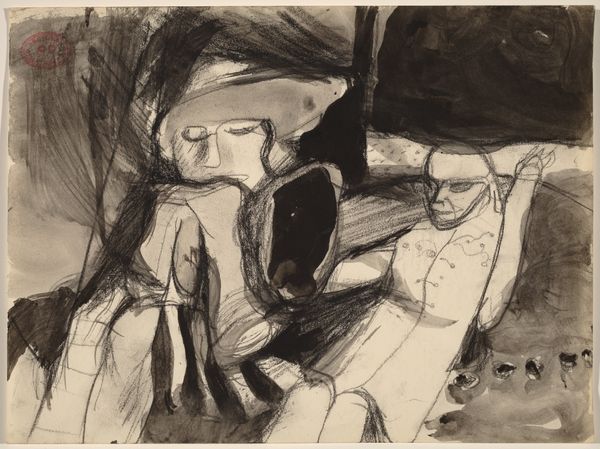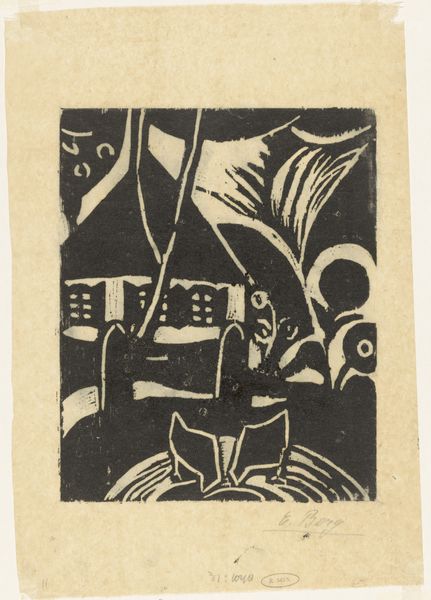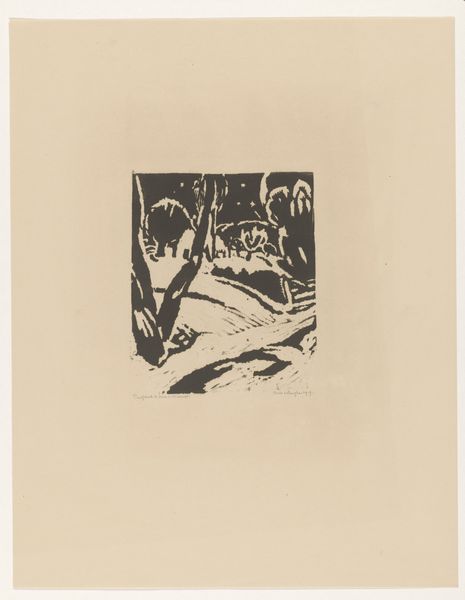
drawing, ink
#
portrait
#
drawing
#
cubism
#
ink drawing
#
ink painting
#
pen sketch
#
figuration
#
ink
#
group-portraits
#
abstraction
Copyright: Public domain US
Curator: Albert Gleizes' ink drawing, "Two Women Seated by a Window," from 1914 presents a fascinating example of early Cubist figuration. Editor: My first thought? Angular melancholy. There's something about the sharp lines and monochromatic palette that evokes a quiet tension, even a kind of muted sorrow. It's less about recognizable figures and more about a feeling distilled into shapes. Curator: Indeed. Notice how the traditional elements of portraiture are fractured and reassembled. We see the women, but their forms are broken into geometric planes, suggesting movement and multiple perspectives simultaneously. The window behind them does not act as a framing device but almost interacts directly within the planes. Editor: Right. It's like Gleizes is not just showing us *what* they look like, but how we *perceive* them. The superimposition of planes makes me feel disoriented, as though the boundaries between these women and the space around them have begun to dissolve. It almost feels like he's captured how one's thoughts might fragment during anxiety. Am I projecting? Curator: Not at all. Cubism sought to represent the world as perceived through the mind, rather than merely replicating surface appearances. Consider the psychological impact; these stark contrasts and angular forms create a sense of unease. There are very few curving lines here, a compositional technique perhaps. We are left to rely on an internal construction, re-assembling it in our minds as we view it. Editor: It is strange to see Cubism treated like a traditional medium; Ink drawing! To imagine Picasso or Braque with a ballpoint pen seems outlandish, but the pen is a powerful thing; you cannot easily erase or blend. Each decision here, must be certain. What’s left over is only the form, no ornamentation or distraction from emotional undercurrent. It feels stripped down and immediate. Curator: This approach to Cubism really emphasized geometric planes as a core foundation. The technique is deceptively simple; each sharp angled line and flat field are meticulously laid. One can imagine a certain confidence that's both bold, in the creation, and contemplative, on the conceptual framework Editor: It definitely sparks something profound even now. The abstraction still challenges, and somehow, strangely reflects parts of our fractured attention spans today. Curator: Gleizes’ ability to instill such profound feelings within such an abstracted geometric form stands as testament to the enduring resonance of symbolic imagery. Editor: A fascinating dance of tradition and iconoclasm that makes one consider what really binds a subject, medium, and their relation in time.
Comments
No comments
Be the first to comment and join the conversation on the ultimate creative platform.
